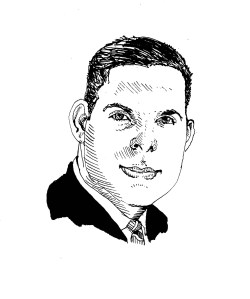The rise of 1 World Trade Center is a visible reminder to every New Yorker that lower Manhattan is nearing the chief milestone in its renewal. The neighborhood that has emerged in the long aftermath of the attacks bears little resemblance to its antecedent.
Apart from their new, paramount significance in the national identity, the neighborhoods of lower Manhattan are now closer to dense urban enclaves than was ever envisaged when Radio Row gave way to what Lewis Mumford described in his book The Myth of the Machine as the “the purposeless giantism and technological exhibitionism that are now eviscerating the living tissue of every great city.”

Lower Manhattan’s path to vibrancy is an incomplete project and one that must compete with—as often as it complements—the monumental. Pedestrians struggle against highways that aspire to grand vistas, barricades and building foundations that have become crude channels for artistic expression, the suburban pedigree of anchor retailers and a general excess of concrete. By design, the planned overpowers the organic. But even Jane Jacobs would concede the attractiveness of lower Manhattan, as a place of work, residence and memory, is stronger than before.
In the immediate aftermath of the Sept. 11 attacks, businesses and residents fled the financial district. Labor and capital productivity were impacted most acutely in the vicinity of the World Trade Center, where upwards of 30 million square feet of office space was removed from the functional inventory. Damage to physical infrastructure and shocks to local and urban agglomerations undercut resource utilization across a much larger area. Amid the dust and debris, many people questioned whether residents and businesses would ever return to lower Manhattan and whether New York had suffered irreparable damage to it economic potential.
Lower Manhattan showed extraordinary resilience in its recovery from the double-blow of recession and the exogenous shock of the attacks. Where office properties had been idled by an exodus of employment, the Liberty Bond program quickly tilted the scales in favor of residential transformation. A shift from commercial to more mixed residential and commercial uses was already underway in the 1990s. The process was accelerated, however, by the subsequent confluence of events and the need to reinvent.
The resulting introduction of new housing units has seen lower Manhattan’s population nearly double over the course of the past decade. The surge in population contrasts with relatively flatter trends for the city as a whole. Though the process has been uneven, the increase in density across lower Manhattan has facilitated the introduction of a range of new amenities, from schools to restaurants, which are only possible because of newfound economies of scale. Residents are not alone in driving these economies; the opening of the Memorial Plaza is just one of many smaller but critically significant milestones that will crowd the streets and bolster demand.
Ideological detractors of government profligacy might hold their tongues given the critical role that public monies have played in lower Manhattan’s renaissance. Of $20.5 billion in Sept. 11-related federal aid, the New York City Independent Budget Office reported last August that it classified a minority as emergency response. The lion’s share of the funds was related to rebuilding and development, including transportation infrastructure, support for Liberty Bonds and community-development block grant funds, which have supported a range of projects, including the memorial and performing arts center, according to New York City’s Independent Budget Office.
The central position of the World Trade Center in shaping what it now means to be American warrants a commensurate investment. One of the biggest challenges, however, will be in ensuring that it remains accessible to each of us. Anyone can visit, but lower Manhattan’s success means that a narrowing group calls it home.
dsc@chandan.com
Sam Chandan, PhD, is president and chief economist of Chandan Economics and an adjunct professor at the Wharton School.


